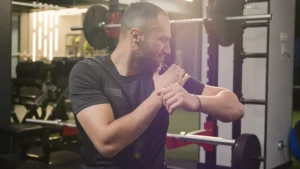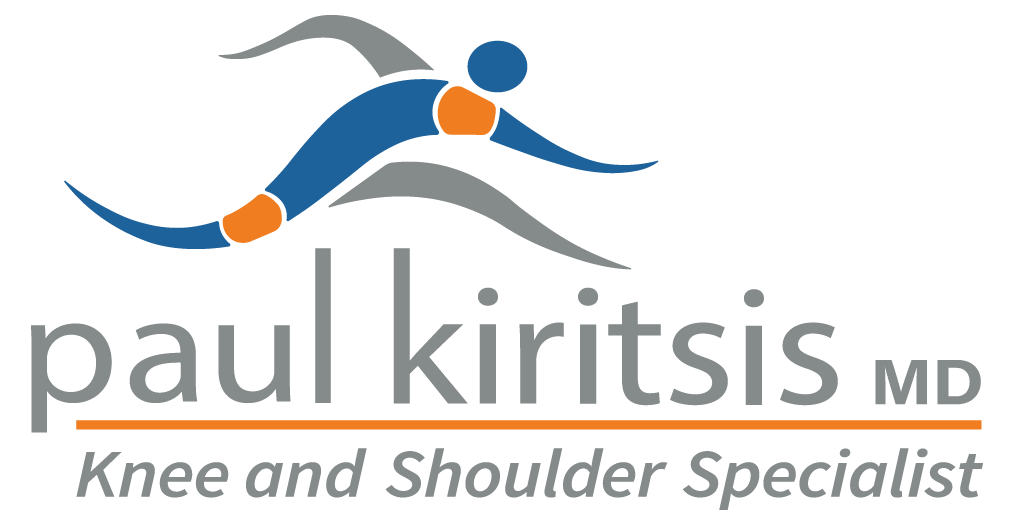Understanding the different causes of arthritis in the shoulder, including osteoarthritis, rheumatoid arthritis, previous injuries, and avascular necrosis, is essential to preventing and managing the condition. In this post, we’ll explore these causes, their symptoms, and treatment options.
Key Takeaways
- Shoulder arthritis often leads to pain, stiffness, and reduced mobility, significantly affecting daily life.
- Treatment begins with non-surgical options like physical therapy and NSAIDs, but severe cases may require surgical interventions such as shoulder replacement.
- Accurate diagnosis via physical exams and imaging tests is essential for effective treatment and improved quality of life in individuals with shoulder arthritis.
Understanding Shoulder Arthritis
Shoulder arthritis is more than just a source of discomfort; it’s a condition that can affect your daily life and overall well-being. It often leads to pain, limited function, and joint stiffness, which can be felt both at rest and during movement. This can make it challenging to perform everyday tasks like lifting your arm or reaching for objects.

The primary joint affected by shoulder arthritis is the glenohumeral joint, the ball-and-socket joint where the humeral head meets the shoulder socket. This joint enables a wide range of shoulder movements, so degeneration here can limit mobility. Previous trauma to the shoulder, such as dislocations or fractures, can worsen the condition.
While living with shoulder arthritis can feel like an uphill battle, gaining insight into its causes, symptoms, and treatment pathways empowers better management.
Osteoarthritis in the Shoulder
Osteoarthritis, also known as degenerative joint disease, is a common form of shoulder arthritis, particularly in older adults. The condition develops as the cartilage in the shoulder joint gradually wears down, affecting both the humeral head and the glenoid. This wear and tear results in increased pain and decreased mobility, making shoulder movements painful and restricted.
The progression of osteoarthritis occurs in stages. Initially, the smooth cartilage surface becomes soft and starts to deteriorate. As the condition advances, the wear can become severe enough to expose the underlying bone, sometimes leading to the development of bone spurs within the joint.
Shoulder osteoarthritis affects nearly one in three people over age 60. Symptoms typically begin as mild discomfort and gradually progress to persistent shoulder pain and stiffness. Recognizing these early symptoms enables a timely diagnosis.
Rheumatoid Arthritis in the Shoulder
Rheumatoid arthritis (RA) in the shoulder is an autoimmune disease that attacks healthy tissues, causing inflammation and damage. Unlike osteoarthritis, rheumatoid arthritis is driven by the immune system mistakenly attacking the joint lining. Consequently, inflammation, swelling, and pain develop in the arthritic shoulder.
A distinguishing feature of rheumatoid arthritis is its tendency to affect both shoulders symmetrically. Unlike osteoarthritis, which may impact one shoulder more severely. This bilateral involvement can cause significant loss of motion and chronic pain, making it difficult to perform daily activities. RA-induced inflammation can lead to joint lining swelling and excess fluid production, further impairing shoulder movement.
Effective rheumatoid arthritis treatment focuses on controlling immune system activity to reduce inflammation and prevent joint damage. Early diagnosis and targeted treatments can help manage disease progression.
Posttraumatic Arthritis Causes
Posttraumatic arthritis may develop following an injury to the shoulder. These may include fractures or dislocations that damage the shoulder joint. Both the acromioclavicular (AC) joint and the glenohumeral joint can be affected by posttraumatic arthritis.
Injuries resulting in posttraumatic arthritis often involve significant force, such as those experienced in car accidents, falls, or sports injuries. These injuries disrupt the normal anatomy and biomechanics of the shoulder, leading to degenerative changes that manifest as arthritis years later.
Management of posttraumatic arthritis focuses on addressing the original injury while minimizing joint stress and pain to slow disease progression.
Rotator Cuff Tear Arthropathy
Rotator cuff tear arthropathy is an advanced form of shoulder arthritis caused by a large, long-standing rotator cuff tear. The rotator cuff tendons stabilize the shoulder joint. When torn, they may fail to hold the humeral head in the shoulder socket. This leads to upward movement of the humeral head, causing it to rub against the acromion and resulting in progressive joint damage.
Symptoms of rotator cuff tear arthropathy can be severe, including intense pain, weakness, and an inability to lift the arm away from the side. These symptoms often worsen with use and can cause significant discomfort at night.
While physical therapy may not fully restore function, it benefits those with rotator cuff tear arthropathy by improving shoulder flexibility and muscle strength. This can significantly reduce pain and improve the quality of life for those managing the condition.
Avascular Necrosis Origins
Avascular necrosis (AVN) is a condition where the blood supply to the humeral head is disrupted, leading to the gradual death of bone tissue. Various factors, including diseases and traumatic injuries, can disrupt blood flow to the bone. Without an adequate blood supply, the humeral head collapses over time, causing joint degeneration and arthritis.
The deterioration of bone due to avascular necrosis can be particularly destructive, as it leads to the collapse of the humeral head and significant joint dysfunction. Early intervention is key to managing AVN and preventing further joint degeneration. Treatment may involve surgical procedures to restore blood flow or replace the damaged joint.
Diagnosing Shoulder Arthritis
Diagnosing shoulder arthritis involves a comprehensive approach that includes collecting medical history, conducting physical examinations, and performing imaging tests. Orthopedic surgeons look for signs such as swelling and limited shoulder movement during a physical exam. Initial assessments identify the severity of the condition and guide further diagnostic steps.
Imaging tests, such as X-rays, are commonly used to diagnose shoulder arthritis. X-rays can reveal irregular joint space, bone spurs, and the overall condition of the joint, including cartilage degradation. CT and MRI scans may be used in some cases to provide a detailed view of the joint and surrounding soft tissues.
Radiographic evidence shows a high occurrence of shoulder osteoarthritis in individuals aged 60 and above, highlighting the importance of regular check-ups for older adults. Early detection enables timely intervention to slow progression and maintain shoulder function.
Non-Surgical Treatment Options
Initial treatment often focuses on non-surgical options. Some options may include:
- Activity modification
- Physical therapy
- NSAIDs
- Dietary supplements
Lifestyle changes, such as avoiding painful activities, can help to manage shoulder arthritis. Range-of-motion exercises are often the first step in non-operative treatment to maintain flexibility and prevent stiffness.
Pain management is crucial in treating shoulder arthritis. Options include acetaminophen, NSAIDs, and corticosteroid injections. Some patients may benefit from hyaluronic acid injections, which can offer short-term pain relief and improved joint function.
Dietary supplements like glucosamine and chondroitin sulfate are frequently considered for their potential joint health benefits. Though the effectiveness of these supplements varies, they can be part of a comprehensive treatment plan to relieve pain and improve joint health.
Surgical Treatments for Advanced Arthritis
When non-surgical treatments prove insufficient or in cases of severe arthritis, surgical intervention may become necessary. Shoulder replacement surgery is the most common procedure for advanced arthritis. The procedure involves replacing arthritic joint surfaces with metal and plastic components to alleviate pain and restore function. Patients with severe arthritis combined with a rotator cuff tear may require a reverse total shoulder replacement.
Precision Shoulder Replacement marks a significant leap forward in the field of shoulder surgery, offering all the proven benefits of traditional joint replacement with cutting-edge innovations aimed at improving both recovery and long-term outcomes. At the heart of this technique is a highly personalized treatment approach. Advanced 3D surgical planning software is used to recreate the shoulder’s native anatomy. This allows for remarkable accuracy, allowing for precise implant sizing and placement. This meticulous customization helps optimize joint function and promotes faster, more reliable healing. Additionally, enhanced pain management protocols are integrated into the process to maximize comfort during the critical early stages of recovery.
A key component of this procedure is a patent-pending technique for repairing the subscapularis muscle, a vital structure for maintaining shoulder stability and range of motion. This innovative method provides a more durable and effective repair, laying the groundwork for better functionality and smoother rehabilitation. The procedure benefits from the expertise of a high-volume surgical team with deep experience in complex shoulder reconstruction and implant design. Drawing on principles from sports medicine and advanced orthopedic innovation, Precision Shoulder Replacement is designed to deliver not just a surgical solution, but a transformative improvement in shoulder health and performance.
For select cases, shoulder arthroscopy may be performed to remove loose cartilage and bone fragments. This common surgical procedure does not cure advanced arthritis, but it can provide temporary relief and improve joint function, though patients should be aware of potential scar tissue formation.
Rehabilitation After Surgery
Rehabilitation is a critical component of recovery following shoulder arthritis surgery. Physical therapy plays a major role in restoring motion and strengthening the shoulder. A well-structured rehabilitation program helps patients progressively regain range of motion while strengthening surrounding muscles, leading to more successful recovery outcomes.
Orthopedic surgeons typically design personalized rehabilitation plans based on the patient’s medical history and specific surgical treatment. These plans focus on reducing pain and restoring function, with a goal of patients returning to daily activities with improved shoulder health.
Summary
From understanding the causes to exploring various treatment options, being informed about shoulder arthritis empowers you to make the best decisions for your health. Whether dealing with osteoarthritis, rheumatoid arthritis, posttraumatic arthritis, or avascular necrosis, early diagnosis and appropriate treatment can significantly improve your quality of life.
Taking proactive steps, such as engaging in physical therapy, considering surgical options when necessary, and following a rehabilitation program, can help manage shoulder arthritis effectively. By staying informed and seeking the right care, you can maintain better shoulder health and enjoy a more active lifestyle.
Frequently Asked Questions
What are the common symptoms of shoulder arthritis?
Common symptoms of shoulder arthritis include pain, joint stiffness, and limited range of motion, which can hinder daily activities.
How is shoulder osteoarthritis diagnosed?
Shoulder osteoarthritis is diagnosed through a combination of medical history, physical examinations, and imaging tests such as X-rays, CT scans, and MRIs to evaluate joint and soft tissue damage. This comprehensive approach ensures an accurate diagnosis and effective management plan.
What non-surgical treatments are available for shoulder arthritis?
Non-surgical treatments for shoulder arthritis include activity modification, physical therapy, NSAIDs, acetaminophen, dietary supplements, and corticosteroid injections. These options can help manage pain and improve function without the need for surgery.
When is shoulder replacement surgery recommended?
Shoulder replacement surgery is recommended when severe arthritis leads to persistent pain and reduced function that cannot be managed through non-surgical treatments. It’s a viable option when conservative measures fail to provide relief.
What is the role of rehabilitation after shoulder surgery?
Rehabilitation plays an essential role in recovering after shoulder surgery by restoring motion and strength, minimizing pain, and facilitating a return to daily activities. Effective rehabilitation enhances overall shoulder health and functionality.





